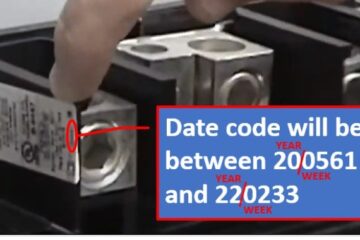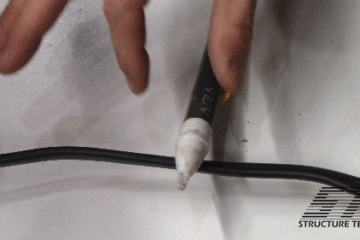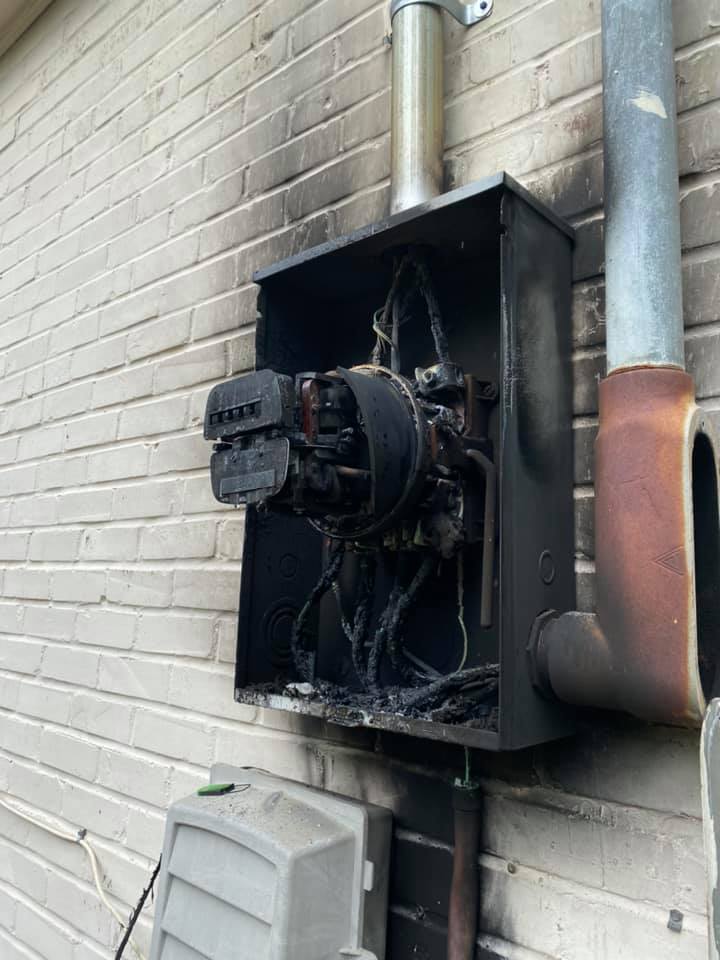Most people don’t know the electrical service size for their house. Nor do they know how to figure it out.As a result, electrical service size is often listed incorrectly, either because the homeowner was not sure, or the listing agent made an incorrect guess. This article serves as a short primer on the significance and assessment of the electrical service size for residential homes.What is electrical service size?
First things first, what the heck is electrical service size anyway? Many homebuyers seem to think that whatever it is, more is better. Indirectly, the service size indicates how many electrical appliances or fixtures can run at the same time. For example, if you have an electric stove and electric clothes dryer, you will need a larger service size than if you have a gas stove and a gas clothes dryer. But you do not always need more. If your service size is adequate, upgrading the service to higher amperage only lightens your wallet.
How much do I need?
A common misconception: if you have a high-power computer or stereo system, you need a larger service size. The truth is these appliances take very little power, even though they are advertised as “high power”. On the other hand, electric stoves, electric clothes dryers or electric hot water tanks draw a lot of power. Electric heat also draws a lot of power.
Here is the typical current draw for a few major appliances:
· An electric stove with the oven and a few stovetop elements running may draw 25 or 30 amps
· An electric clothes dryer may draw 20 amps
· An electric hot water heater may draw 20 amps
· A hair dryer may draw about 12 amps
· A toaster draws approximately 10 amps
· Central air conditioning draws around 15 to 20 amps
· A hot tub may draw 20 to 40 amps
Here is a look at the service size for a few typical houses:
Description and Possible Service Size
3bdrm, 2story; Gas heat,100 amps
3bdrm, 2story; Electric heat,150-200 amps
5bdrm, Gas heat 150-200 amps
5000 sq-ft home, Gas heat, 200 amps
(This is typical, but you might find it as high as 400 in unusual circumstances)
Largest every-day service size you will most often see 200 amps (The size is usually as big as it gets, but most homes do not need even this amount)
Largest service size you will see, but only in unusual circumstances is 400 amps … (This size is unusual and may only be found in a very large home with lot of electrical appliances)
The components of the electrical service
Before determining the electrical service size of a house, you need to know about a few of the components that make up the electrical service.
The service entrance cable:
This cable brings electricity into your house. It usually runs down the outside wall of the house inside a conduit. In newer areas of the city, the cables run underground.

The meter:
The meter measures how much electrical energy you consume. The meter itself is the property of the utility. The base of the meter, or the socket that the meter sits in, is the property of the homeowner.
The conduit:
The conduit is the pipe that the cables pass through. The conduit protects the cables from mechanical damage.
The service box:
The service box contains the main fuses or breakers. In some cases, the service box is a separate item. In modern installations, the service box is combined with the main breaker panel (called a combination panel). This photograph shows a combination panel with the main breaker on the left and the distribution breakers on the right.
The main fuse or breaker:
The main fuse or breaker is the gatekeeper. If the main breaker is 100 amps, when you attempt to draw more than 100 amps, the breaker shuts off to protect the rest of the system from overheating.
The distribution panel:
The distribution panel is either a fuse panel or a breaker panel. Today, breakers are used almost exclusively because they are more convenient.
How can I determine the service size?
Determining service size can be tricky. There are a number of variables that can throw you off. Often, the determining factor is not visible. We recommend that you exercise caution when determining service size. It is easy to get it wrong. Having said that, here is how you can approach it for the best results.
Most of the time, you can nail down the service size by the rating of the main breaker or fuse. This photograph shows a main fuse. There are two but you can only see one of them in this picture. It says 100 amps on this fuse. This is most likely a 100 amp service.
Although the first guess comes from the main breaker or fuse, it is possible to get it wrong. Here’s why: the service size is determined from the rating of the smallest component in a chain of components that make up the electrical service. These components are:
· The service entrance cable
· The meter and meter base
· The conduit pipe
· The service box
· The main fuse or breaker
Compatibility
The components described above have to be compatible. For example, if the service entrance cable is only rated for 100 amps and the main breaker is 200 amps, the system has a problem. Since it is possible for 200 amps to flow through a 100-amp cable, this situation presents a fire hazard.
Now, if the service entrance cable is rated for 200 amps and the main breaker is only rated for 100 amps, no problem exists. The maximum that can be drawn through the cable before the breaker shuts off is 100 amps, but the cable can handle 200 amps. This compatibility issue is true for all of the components that make up the electrical service. All of the components in the system must be rated to handle at least as much as the main fuse or breaker.
Let’s go back to the example of a cable rated for 100 amps with a main breaker rated at 200 amps: the service size is 100 amps not 200 amps because the definition of service size is the rating of the smallest component in the chain. You may argue that the breaker will not shut off until it reaches 200 amps, and you may call it an unsafe 200-amp service, but the definition of service size means it is an unsafe 100-amp service. What is most important in this case is to focus on the fact that the service is unsafe, regardless of a correct assessment of the service size.
Cable rating
The main service entrance cables are rated for the maximum current they can handle. This is a critical component and it must be compatible with the main fuse or breaker as described above.
Here is a chart of ratings of common service entrance cables.
Cable Size (copper wire size – USA) Service Size Compatibility
#6 AWG; 60 amp service
#4 AWG; 100 amp service
#2 AWG; 125 amp service
#1 AWG; 150 amp service
#2/0 AWG; 200 amp service
Conduit rating
The diameter of the conduit is a tip off for service size. Once again, there is no down side to using an oversized conduit so don’t be fooled.
· 60 amp service – 1 inch conduit minimum
· 100 amp service – 1 ¼ inch conduit minimum
· 200 amp service – 2 inch conduit minimum
How not to determine service size
One of the tricks to determining service size is not to be fooled by the ratings on the components of the service entrance. For example, if the electric meter is rated for 200 amps, this simply means that it can handle up to 200 amps. But there is no reason it cannot be used for a 100-amp service.
· Do not use the rating on the meter alone but make sure it is compatible
· Do not use the size of the conduit alone but make sure it is compatible
· Do not use the rating on the service box alone but make sure it is compatible
· Do not use the rating on the distribution panel alone but make sure it is compatible
The right way to determine service size – step by step
If you do this you have a very good chance of guessing it right.
· Identify the main fuse or breaker. Start with the assumption that this is the service size
· Check that the service box and breaker panel are rated for at least this much
· Check the meter and verify that it is rated for at least this much
· Check the size of the conduit
· Check the size of the cable and verify that it is rated for at least this much. This is the part that may not be possible for you. If you can’t read the data on the cable because it is not accessible or it’s faded, you have to rely on your experience recognizing cable sizes. Unless you were an electrician in a former life, you may get this wrong.
We said that you have a good chance of guessing it right if you follow the steps above. This implies that it is still possible to get it wrong. There are a couple of obscure situations that could throw a wrench in the works such as service cable that is ‘de-rated’ due to its inferior temperature rating. Unfortunately, you are just not going to know, but on the bright side, neither will anybody else, except perhaps an electrician.
Here is a real example:
Let’s look at ratings for the meter, the main breaker and the breaker panel The meter is rated at 200 amps, the distribution panel is rated at 125 amps while the main breaker is rated at 100 amps. What is the service size? Answer – 100 amps. Surprised? Don’t worry , most people have been doing it wrong!
Caution! Avoid electrocution. We do not suggest you open or touch any electrical equipment.
Source: globalbusinessnews.net/ |



